Curious about what the Japanese eat every day or want to plan a full-out Washoku meal? The mystery is all in One Soup Three Dishes called “Ichiju Sansai” (一汁三菜).
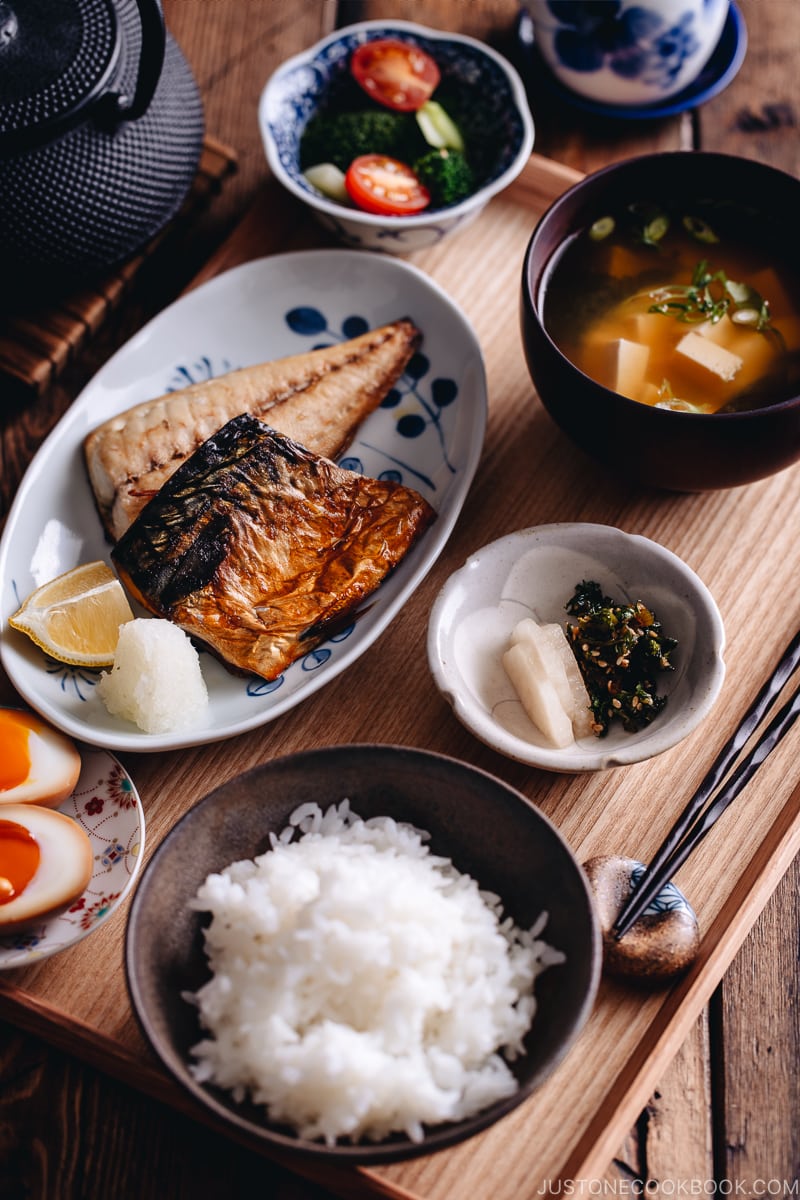
Thanks to Japanese food porn shows such as Midnight Diner: Tokyo Stories and The Makanai: Cooking for the Maiko House, we receive many questions from curious readers about the dishes featured on the shows.
But the most interesting were questions like, “What do the Japanese eat every day?” and “How can I plan and cook Japanese food at home?”
Contrary to popular belief, the Japanese do not live off a steady diet of ramen, sushi, and tempura (although I wish!) Japanese cuisine, or Washoku, is simple and has a nutritious balance of protein, fiber, and vegetables portioned in plates and bowls.
Called Ichiju Sansai (一汁三菜), literally “one soup three dishes,” this is the foundation of a Japanese meal.
Table of Contents
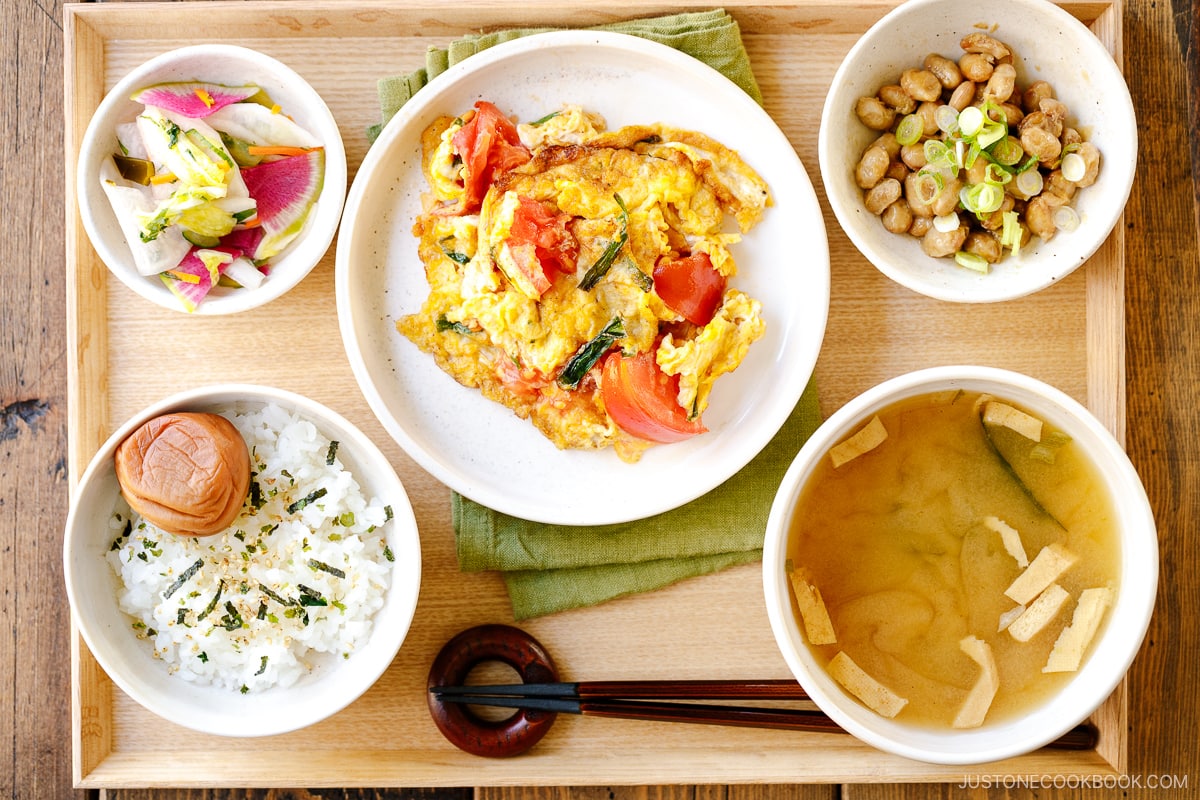
What is Ichiju Sansai?
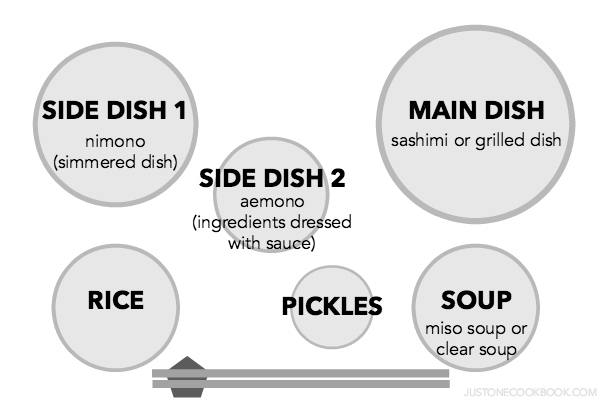
A typical Japanese meal comprises four elements: rice, soup, side dishes, and pickled vegetables.
- Gohan (ご飯) – a bowl of plain steamed rice
- Shiru (汁) – a bowl of soup, which may contain vegetables or tofu
- Okazu (おかず) – main dish and two side dishes composed of vegetables, tofu, fish, or meat
- Kouno mono(香の物) – a small plate of tsukemono, pickled vegetables
This meal format can be served for breakfast, lunch, or dinner. If you’ve been fortunate to spend a night at a ryokan (Japanese inn), you may have witnessed the elaborate spread of dishes for breakfast. Or perhaps you may have encountered something similar in the form of a teishoku (set menu) at a Japanese chain restaurant such as Ootoya or other places.
Each dish is served as a light portion and is intended to not only fill you up but also obtain the necessary minerals and vitamins to keep you charged throughout the day.
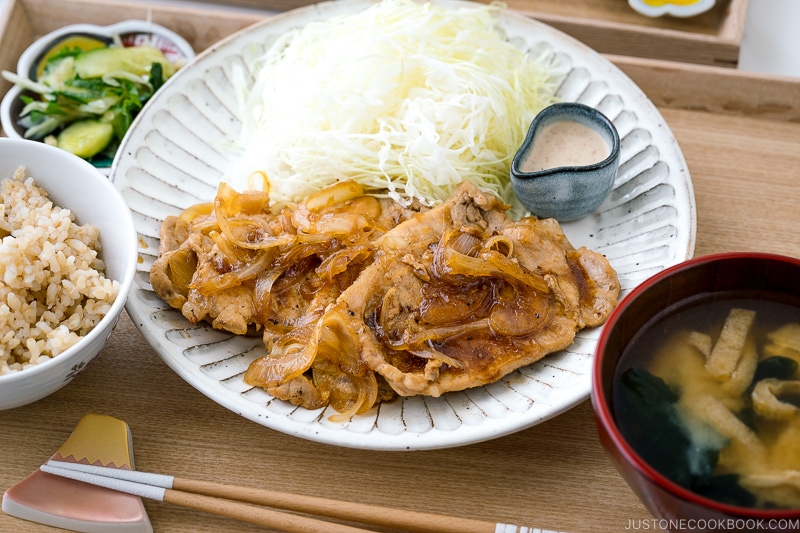
How Ichiju Sansai Started in Japan
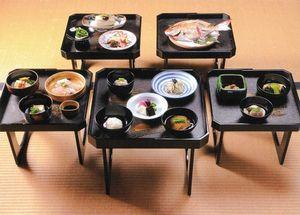
The style of “one soup, three dishes” originates from Honzen Ryori (本膳料理), a highly refined system of meal-serving established as a banquet style for the upper nobility and the samurai class during the Muromachi period (1336–1573).
The elaborate dishes were arranged and brought to the guests on small four-legged tray tables called “zen” (膳). The tables were presented to the guests in sets of three, five, or seven, starting with the main “zen” (Hon-zen 本膳), the second “zen” (Nino-zen 二の膳), the third “zen” (Sanno-zen 三の膳), and so forth.
The style of honzen ryori simplified over time from extravagance to the everyday meal, and what remains to this day are the dishes on the main “zen” (Hon-zen), featuring rice, soup, pickles, and three okazu dishes. This is the foundation of “one soup, three dishes.”
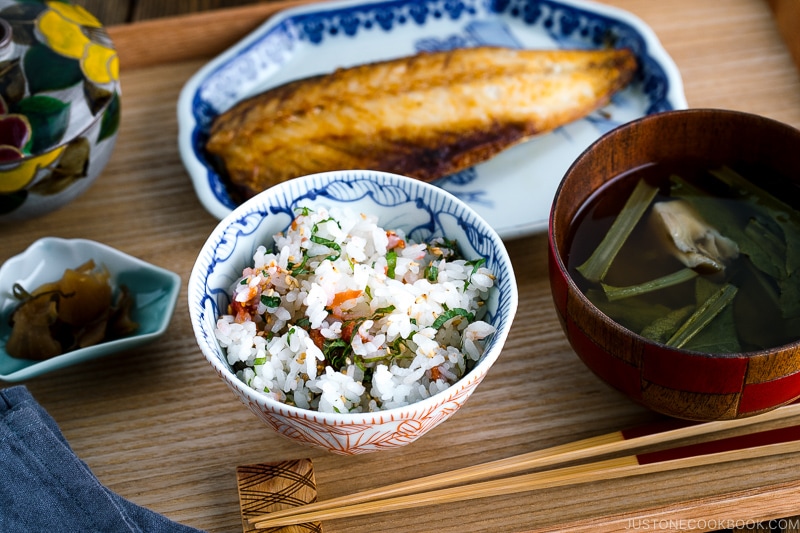
Rice: The Heart of Japanese Cuisine
You may wonder why there’s no mention of rice or Tsukemono pickles in the Ichiju Sansai. This is because a Japanese meal always includes rice and pickled vegetables. Rice is not only a dish in itself, but it is also an essential component of the national cuisine.
It also has a symbolic place in the Japanese language: the term Gohan (ご飯) means both “cooked rice” and “meal.” The sticky, short-grain Japonica rice is the heart of a Japanese meal and also the staff of life.
It’s also a necessary ingredient in Japanese cuisine. Koji mold culture injected into steamed rice is essential in making sake, mirin, and miso.
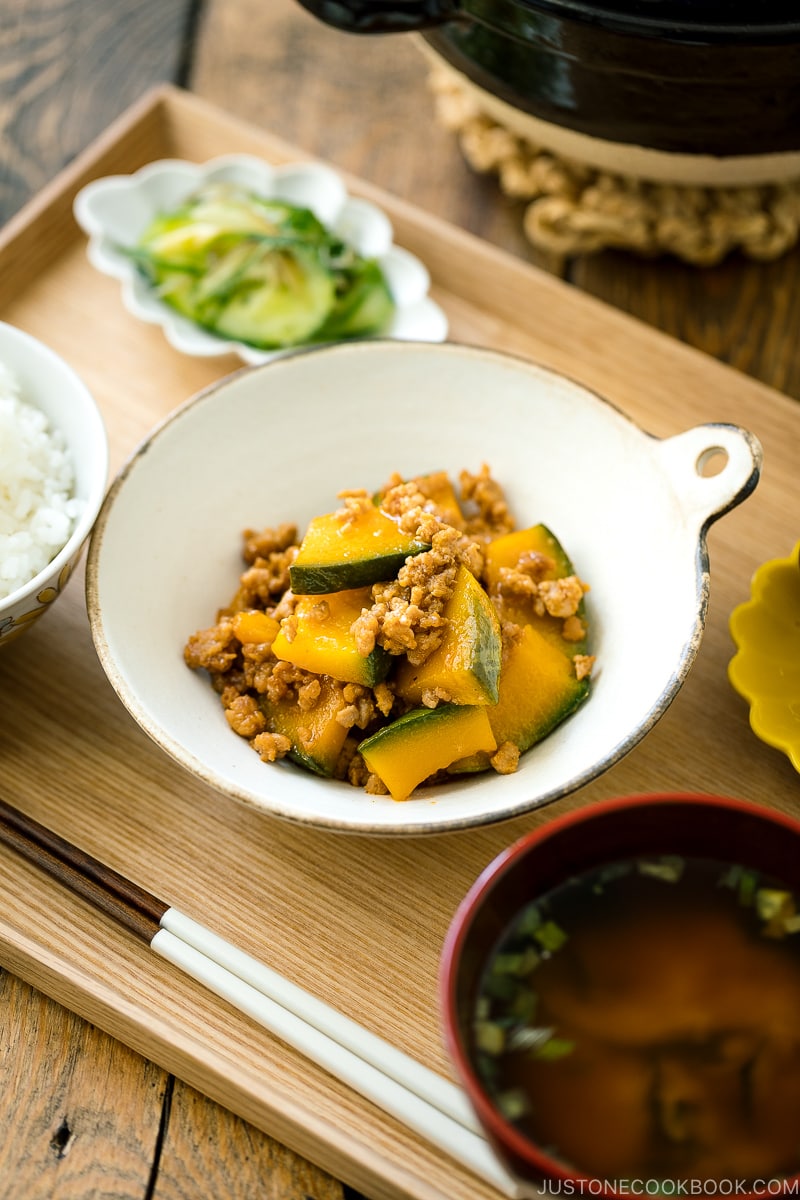
How to Plan an Ichiju Sansai Meal
So let’s get started! Ichiju Sansai is just a structure, so even if you’re vegetarian, pescatarian, vegan, or have dietary restrictions, you can easily swap and adjust recipes to suit your dietary needs for a filling meal.
Browse through the recipes below to pick out what you want to cook!
Rice (Gohan)
Traditionally, rice would be served plain. But if you’re seeking flavor and color in your rice, try Takikomi Gohan (炊き込みご飯), rice cooked with vegetables and seasonings.
Note that the rice bowl is placed on the left, close to you for right-handed people, and on the right for left-handed people.
Here are some ideas to get you started:
- How to Cook Rice (if you don’t own a rice cooker!)
- Ginger Rice (with a little spicy kick!)
- Gobo and Miso Takikomi Gohan (add oomph to your rice with burdock root and fish cake)
- Mame Gohan (fresh spring peas cooked with rice)
- Matsutake Gohan (an autumn delicacy)
- Chestnut Rice (another autumn specialty)
- Mushroom Rice (umami rich!)
- Corn Rice (summer favorite)
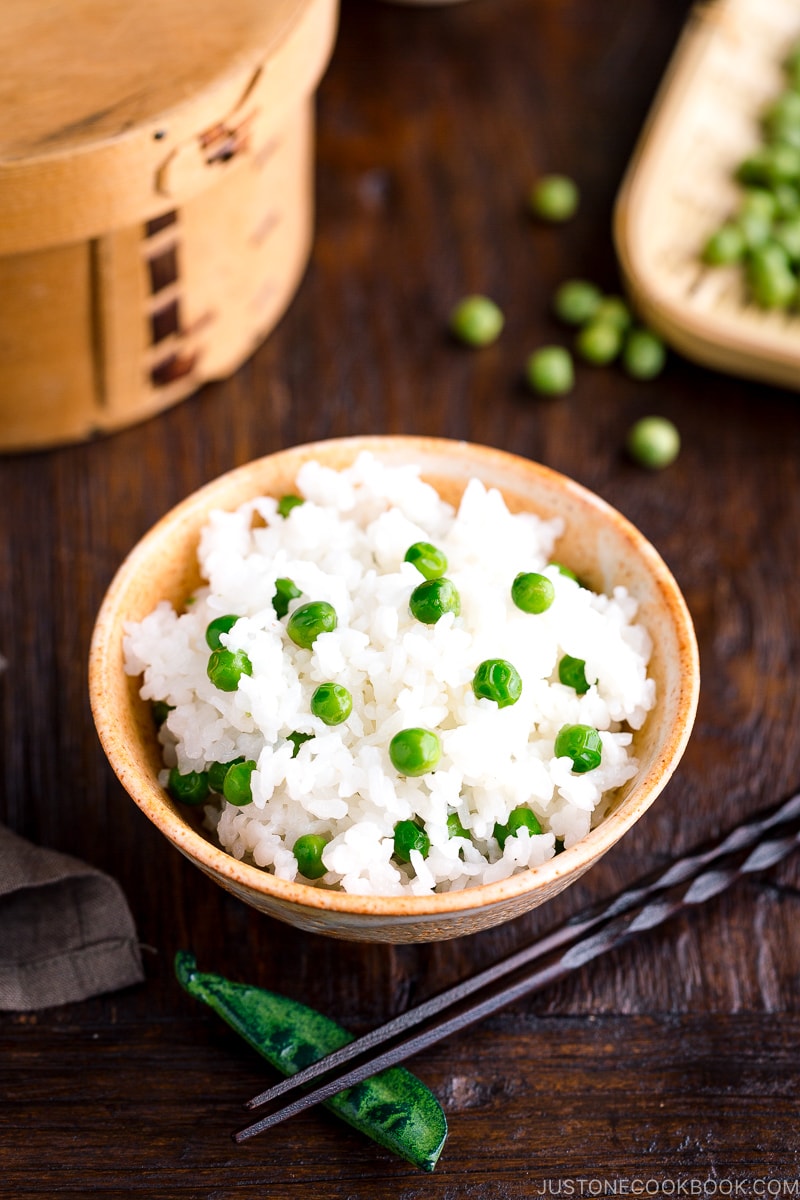
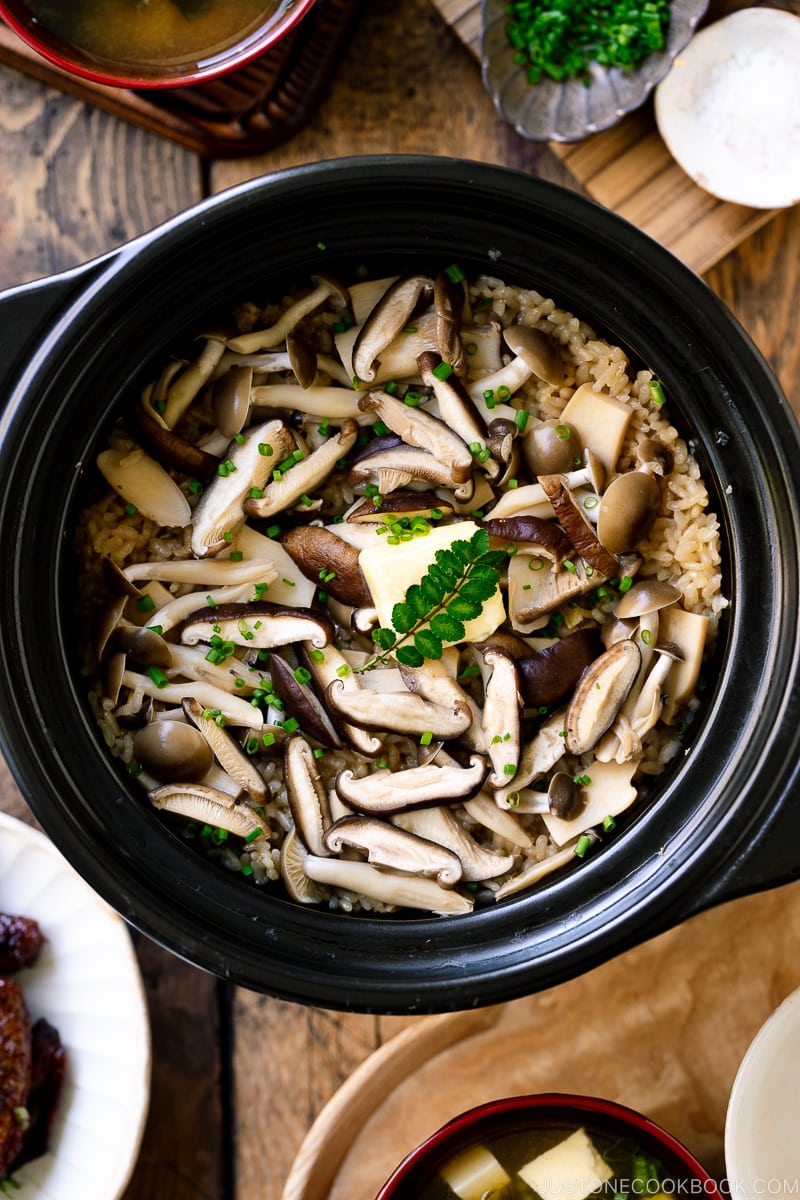
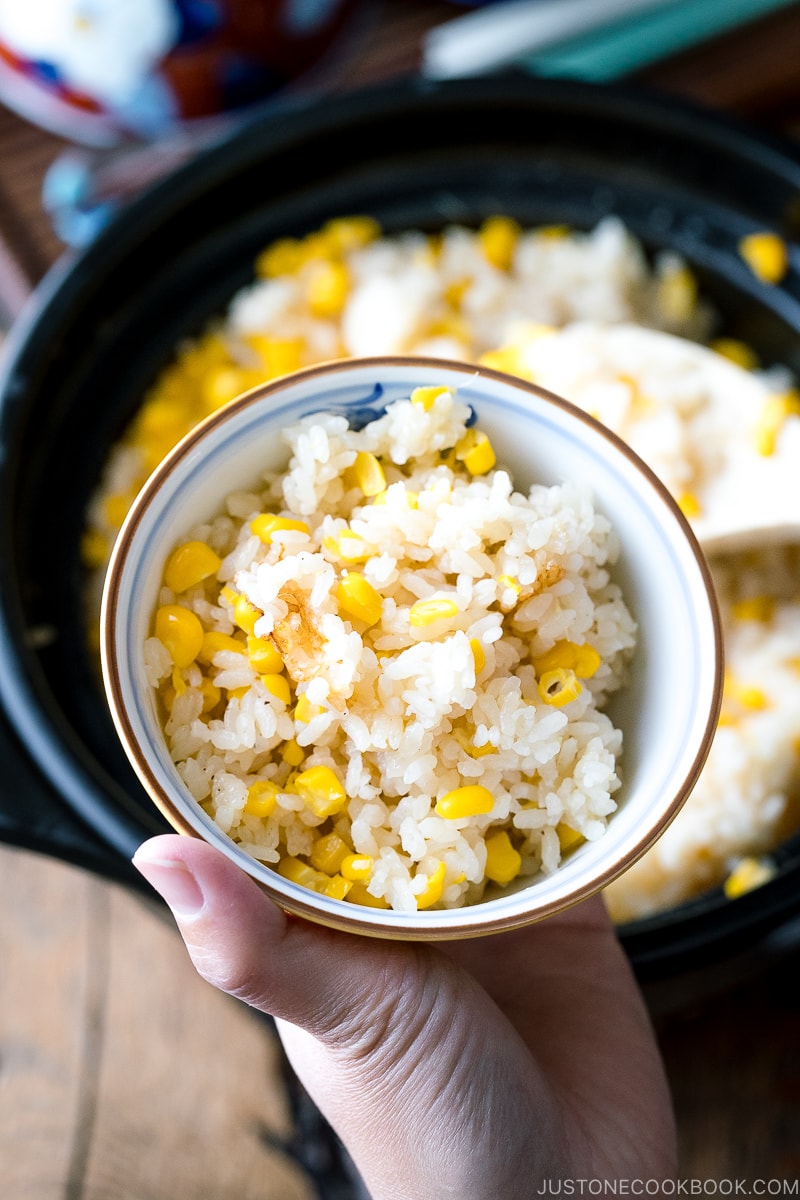
Pickled Vegetables (Tsukemono)
Cleansing your palate between meals may sound a little strange initially, but with all the different textures and flavors, you may get addicted to it! Tsukemono offers a wide variety of pickling methods and ingredients.
- Pickled Cabbage
- Pickled Cucumbers
- Pickled Daikon
- Pickled Turnip with Yuzu
- Everyday Japanese Pickles
- Pickled Watermelon Rind
- Pickled Napa Cabbage
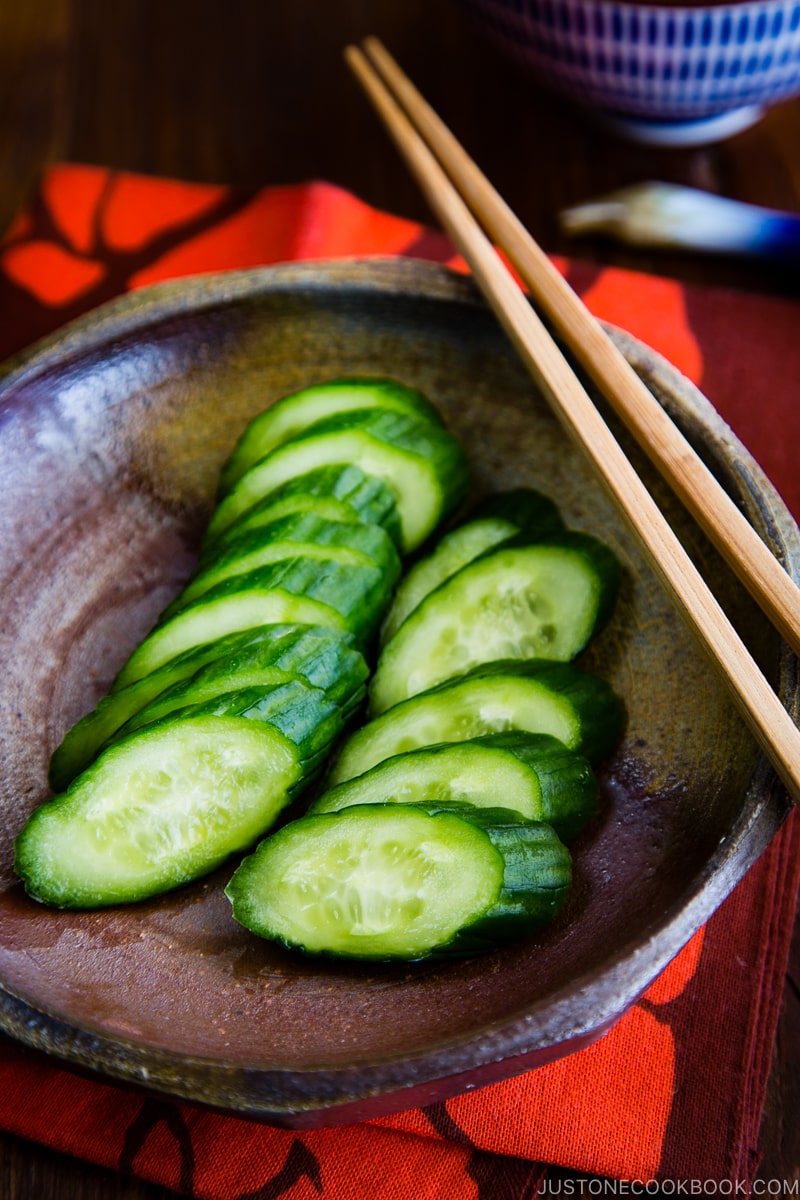
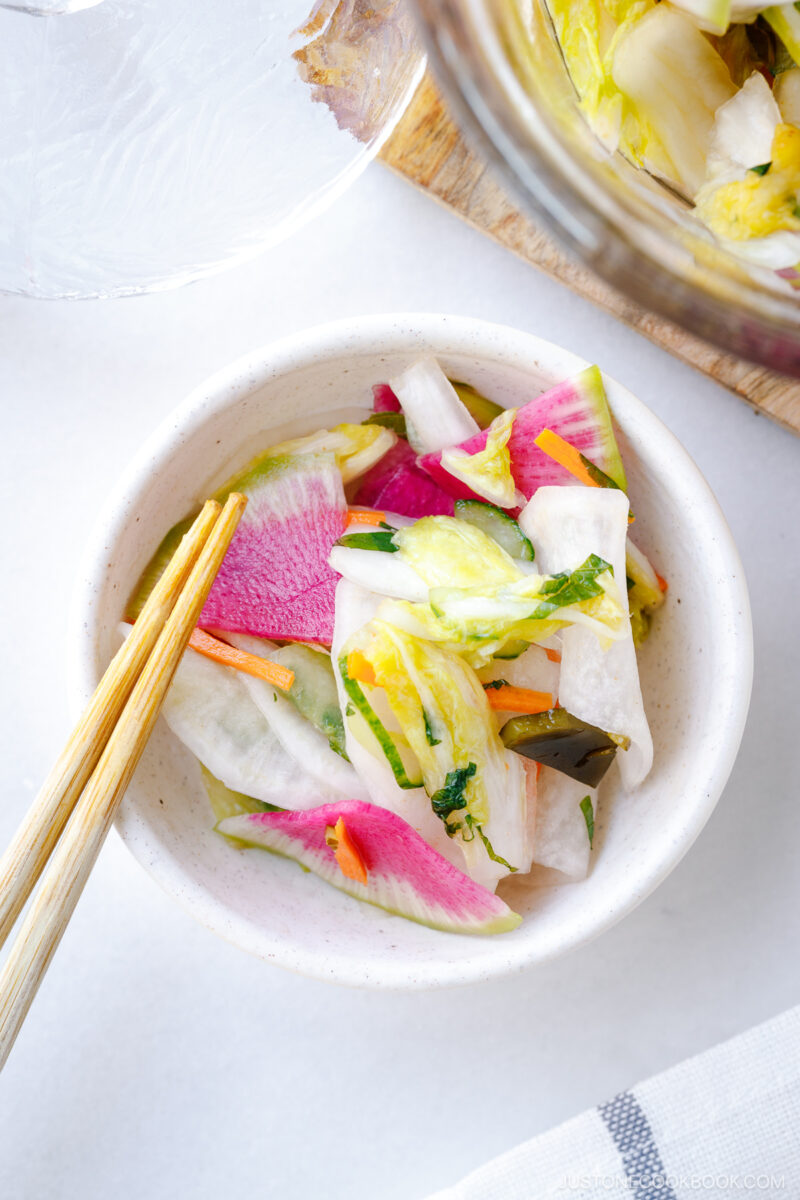
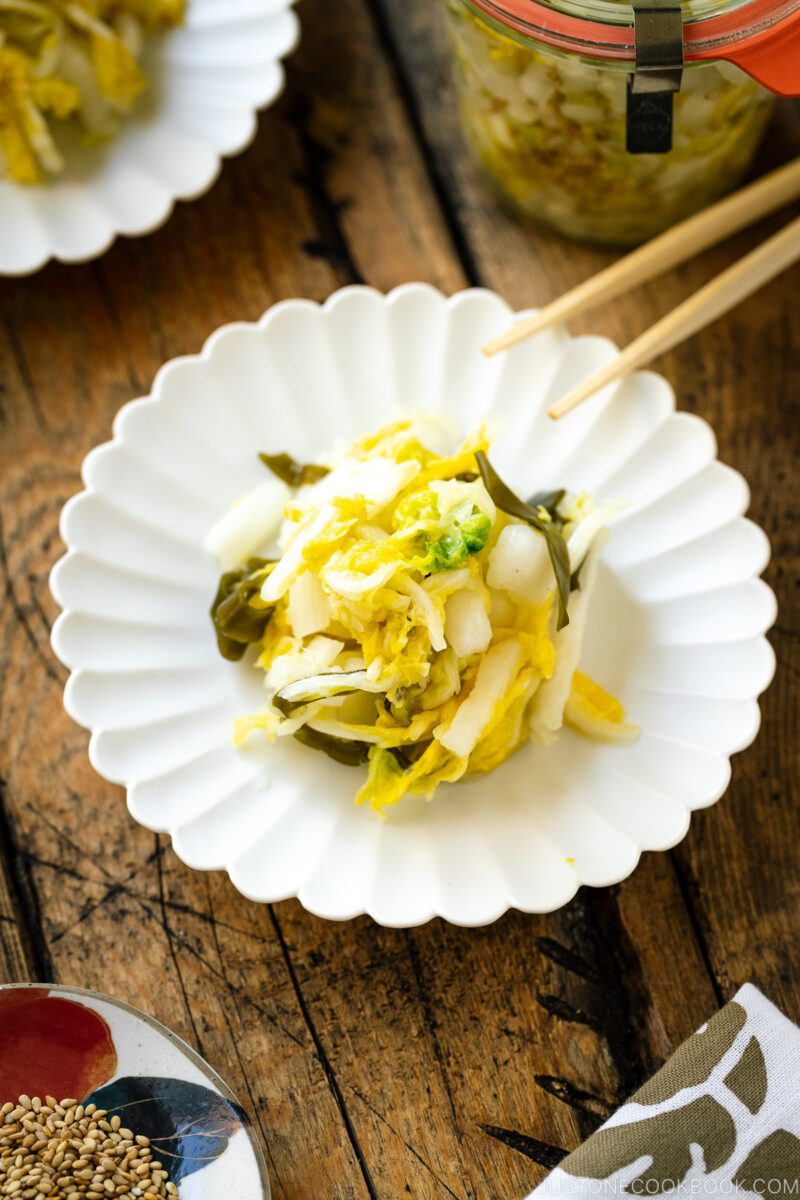
Soup (Shiru)
A soup is not just a side dish; it holds its own place in a Japanese meal. Miso soup is most commonly served, but feel free to serve whatever you wish!
Always place the soup bowl on the opposite side of the rice, so on the right for right-handed people and the left for left-handed people.
- Miso Soup (your everyday soup)
- Japanese Clam Soup with Clear Broth (a simple, clear broth with kombu dashi and Manila clams)
- Kenchinjiru (a hearty vegan soup)
- Matsutake Soup (a clear broth featuring an autumn delicacy)
- Sanpeijiru (originally from Hokkaido, a chunky salmon soup)
- Tonjiru (a pork and root vegetable miso stew)
- Bacon Asparagus Miso Soup (a spring favorite of ours with fresh asparagus)
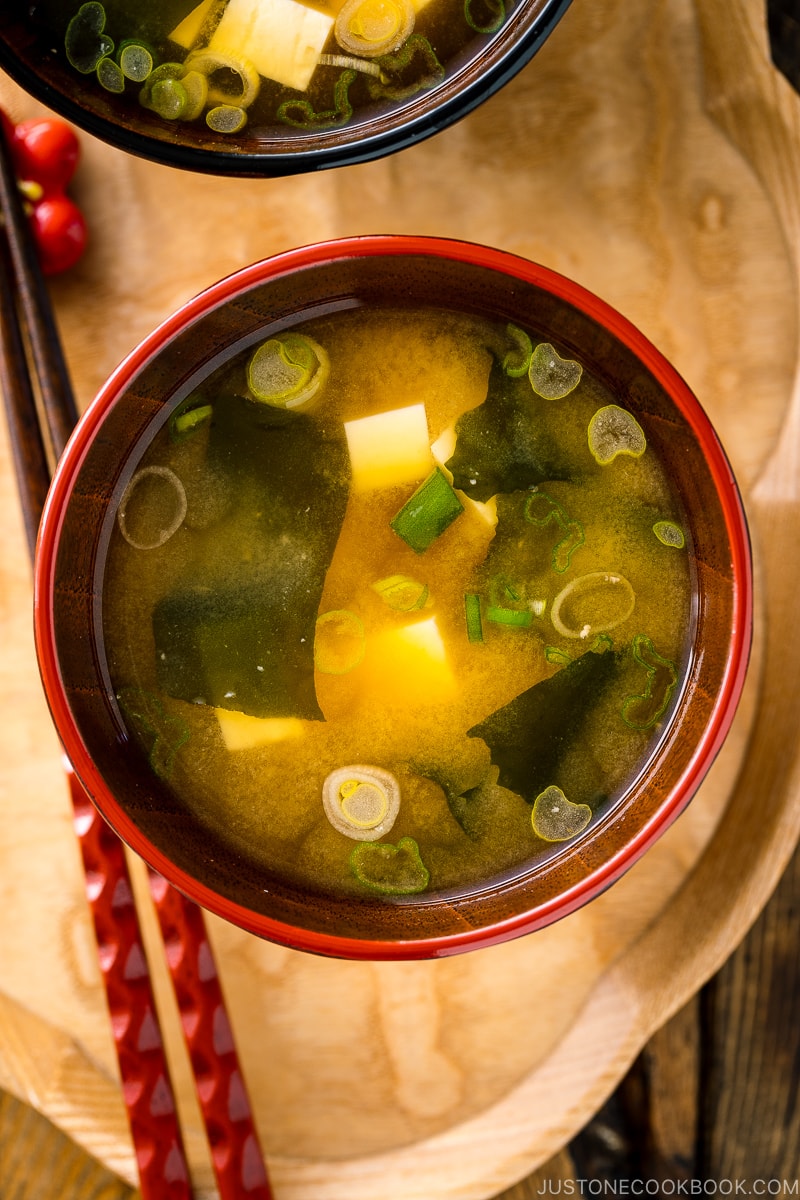
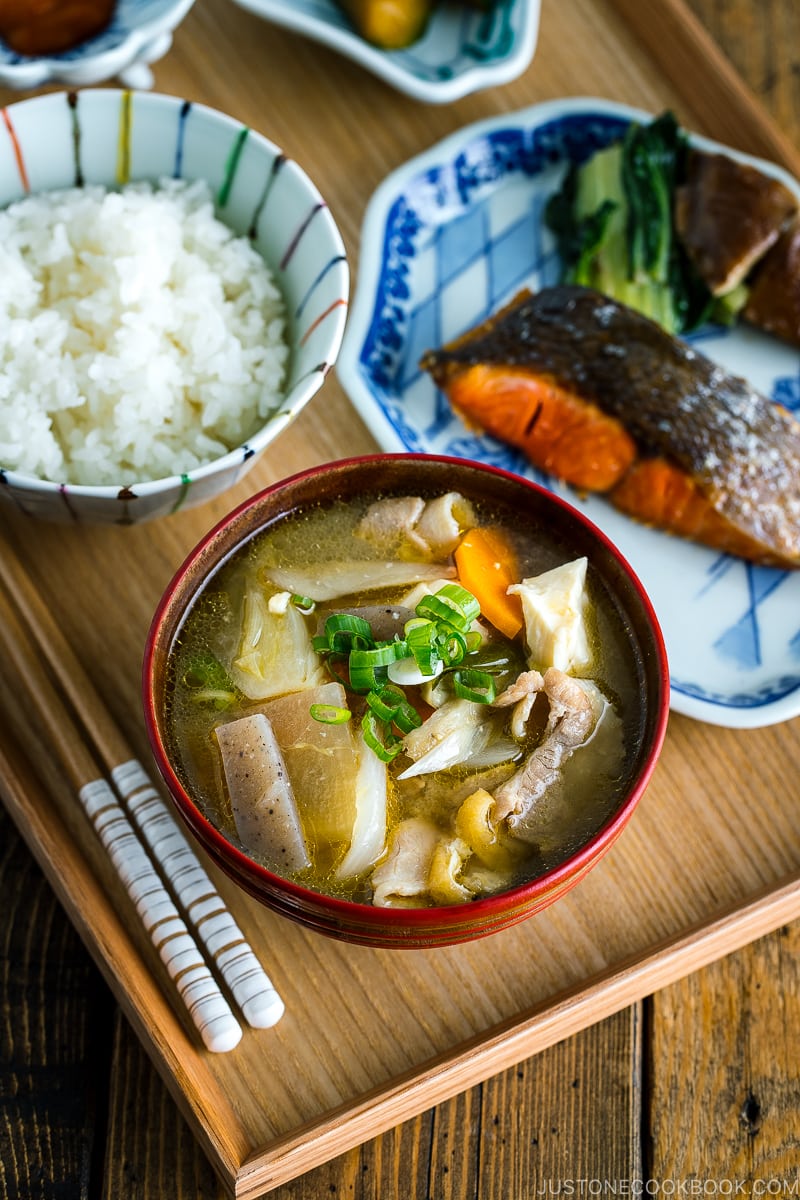
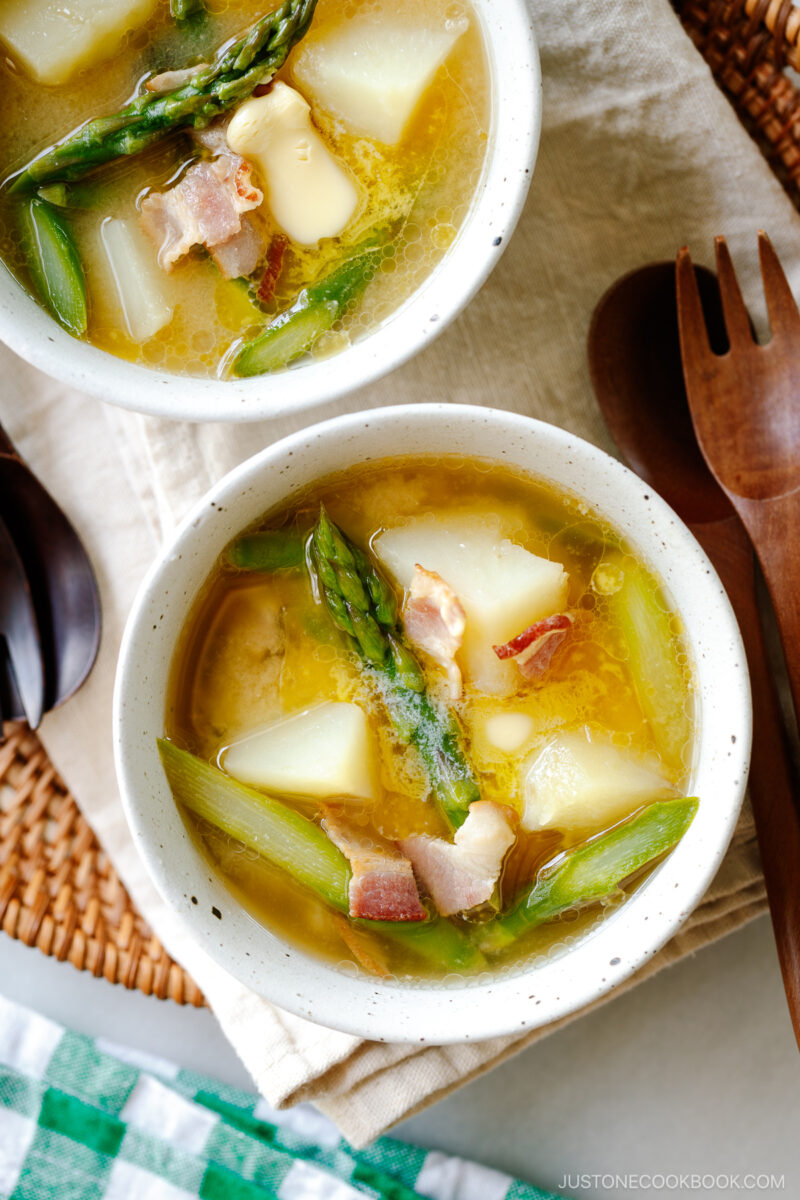
Main and Two Side Dishes (Okazu)
Traditionally, the main protein would be grilled or simmered fish, and meat has become popular only during the last 150 years. Nowadays, you’ll see more fried foods on the table as the main protein, such as Tonkatsu, Karaage, or Gyoza.
Meat & Fish dish
- Kakuni (braised pork belly)
- Catfish Kabayaki
- Hamachi Kama
- Nikujaga (potato and pork braise)
- Ootoya’s Sweet and Sour Chicken (vegetable and chicken stir-fry)
- Saba Misoni (mackerel poached in miso)
- Tonteki (pork loin)
- Yellowtail Teriyaki
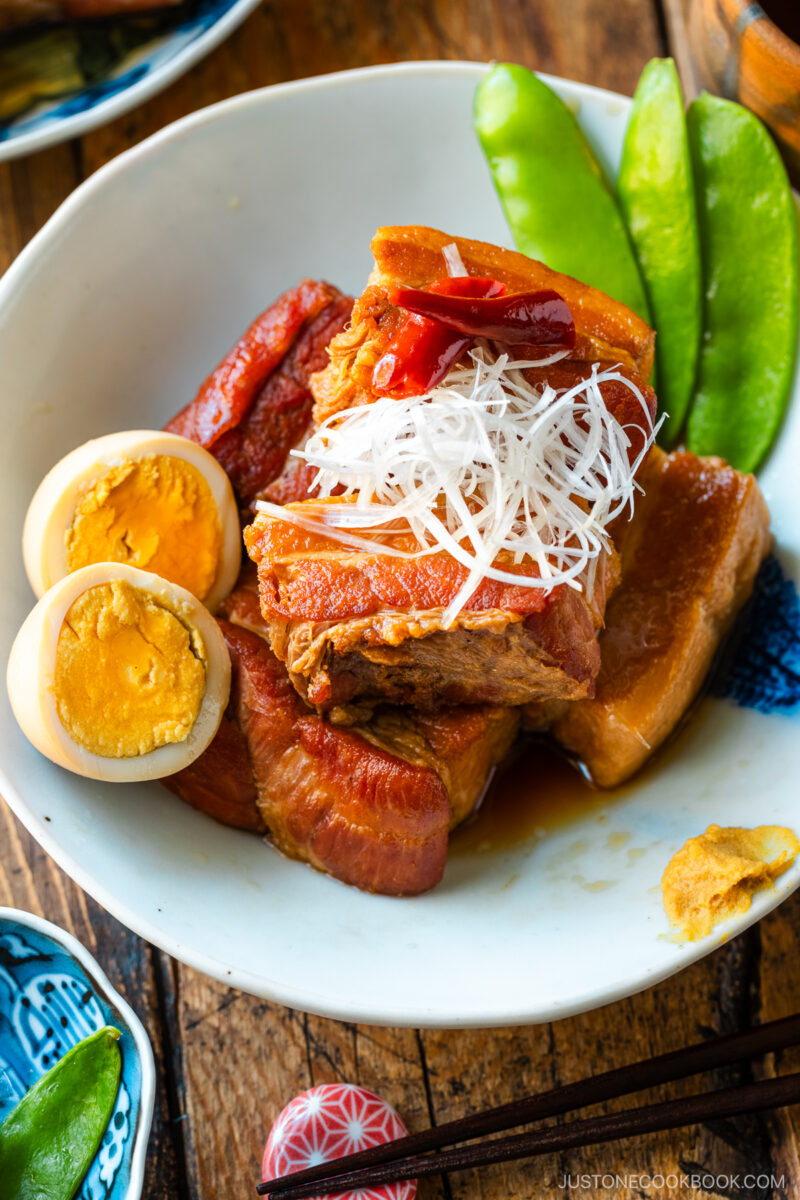
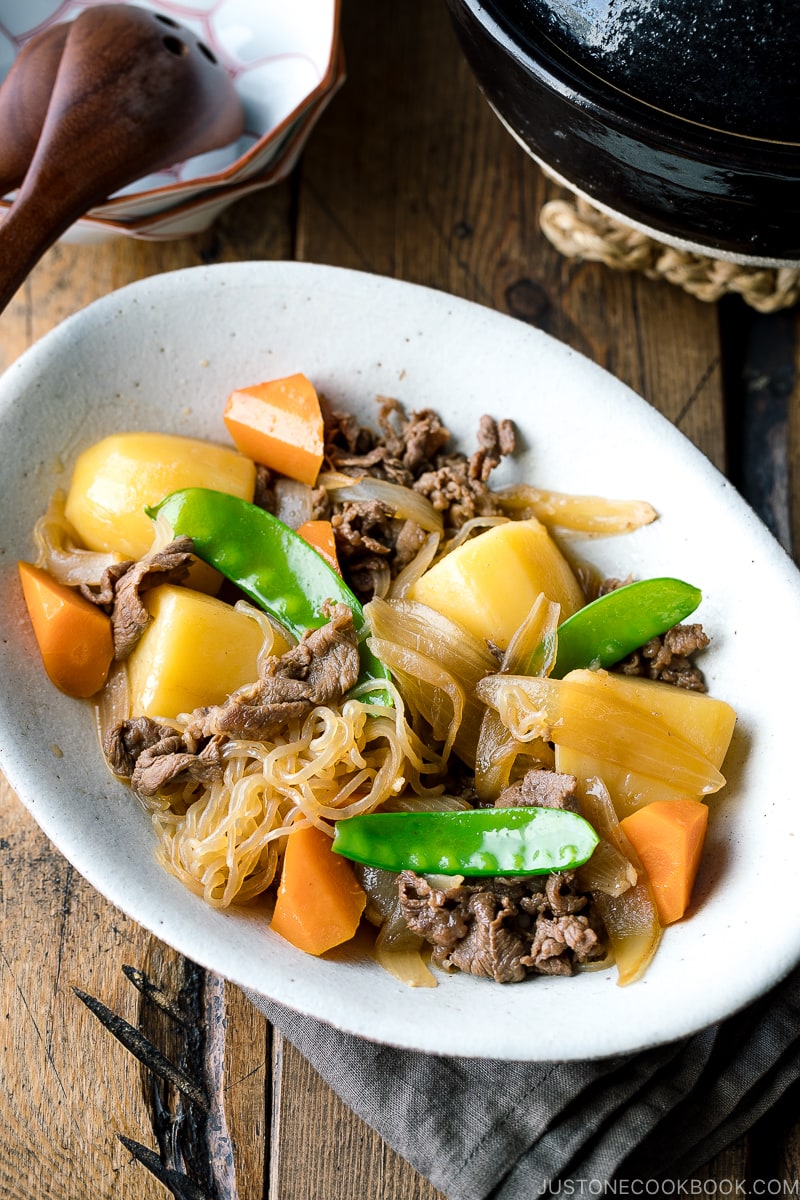
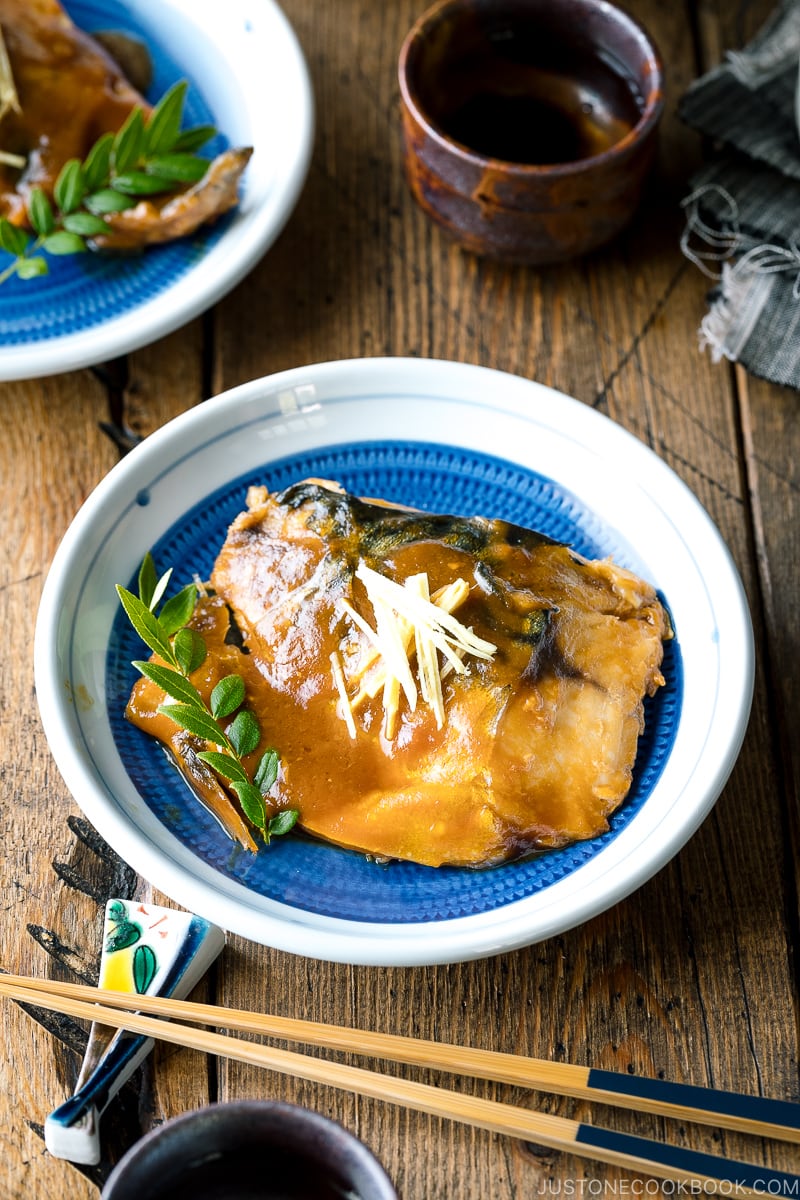
Vegetable dish
Vegetables are served in cooked form and not served raw.
- Agedashi Tofu (deep-fried tofu cubes)
- Broccolini Gomaae (dressed in a nutty sesame sauce)
- Hijiki Seaweed
- Kinpira Renkon (stir-fried lotus root)
- Simmered Kabocha
- Spinach Ohitashi (blanched spinach in dashi)
- Vegetable Tempura
- Warm Mushroom Salad
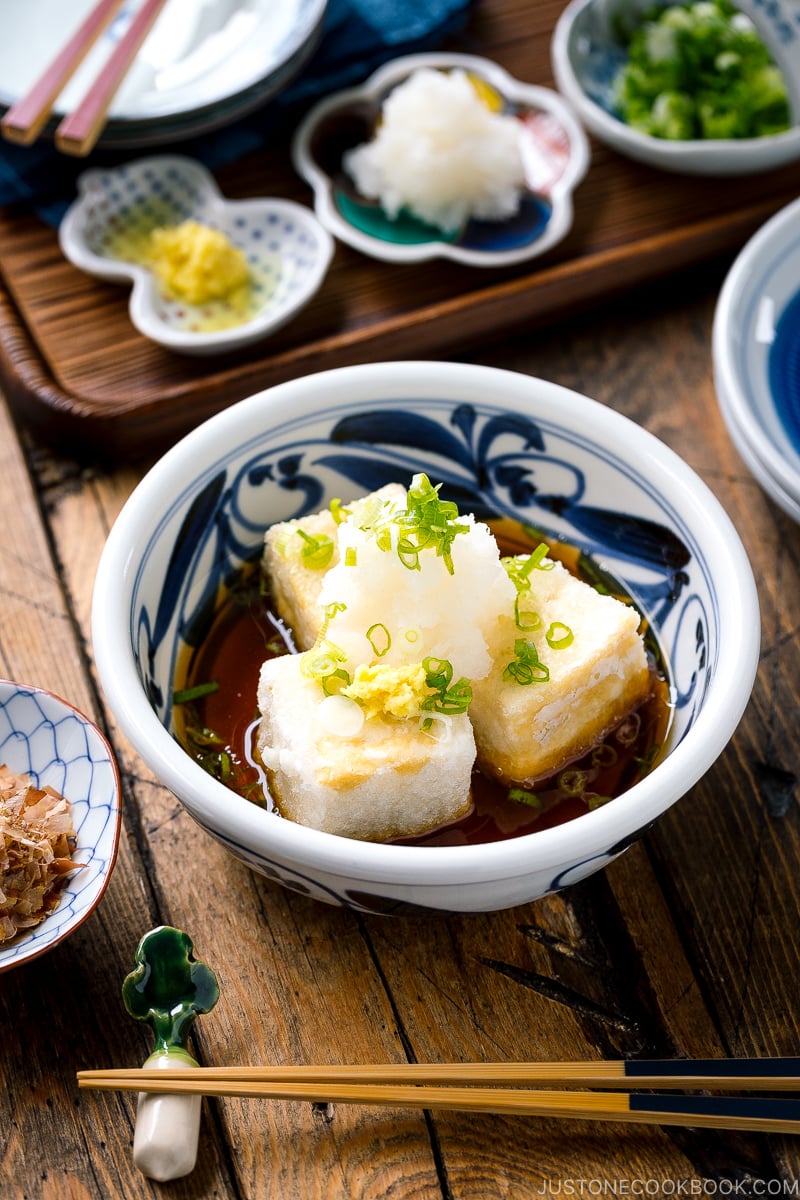
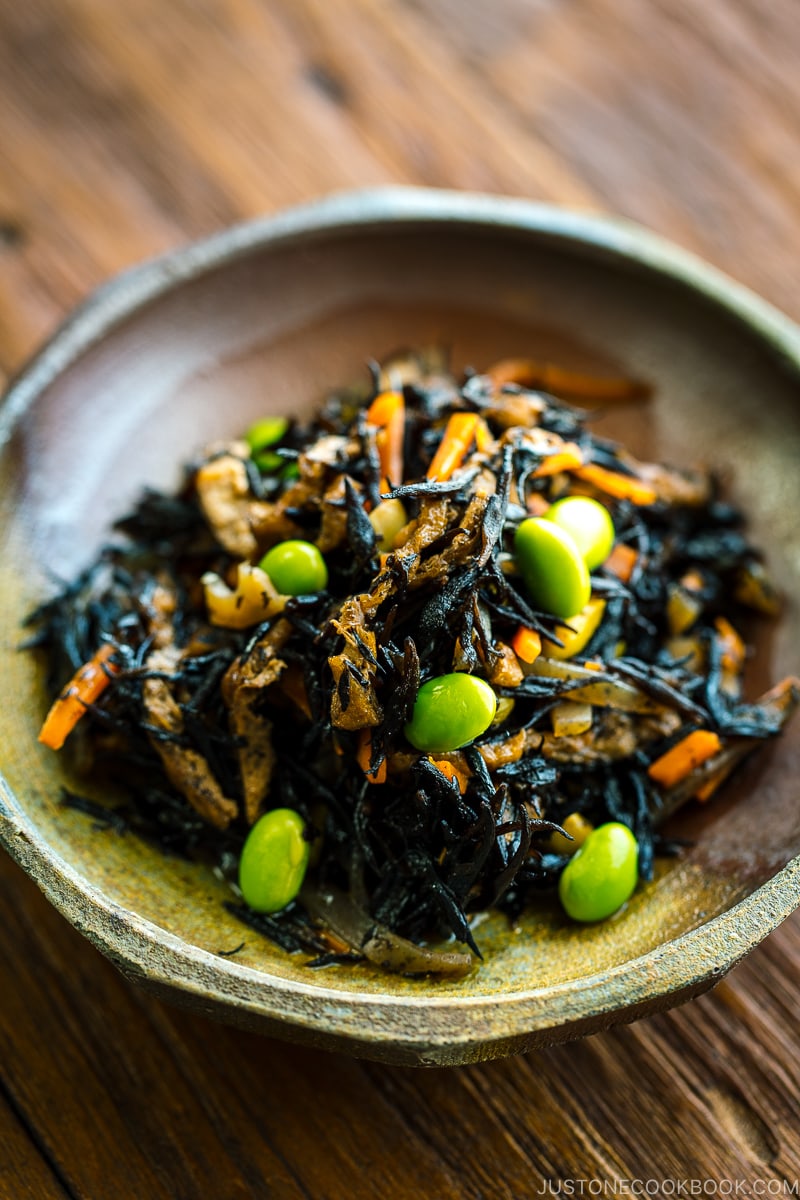
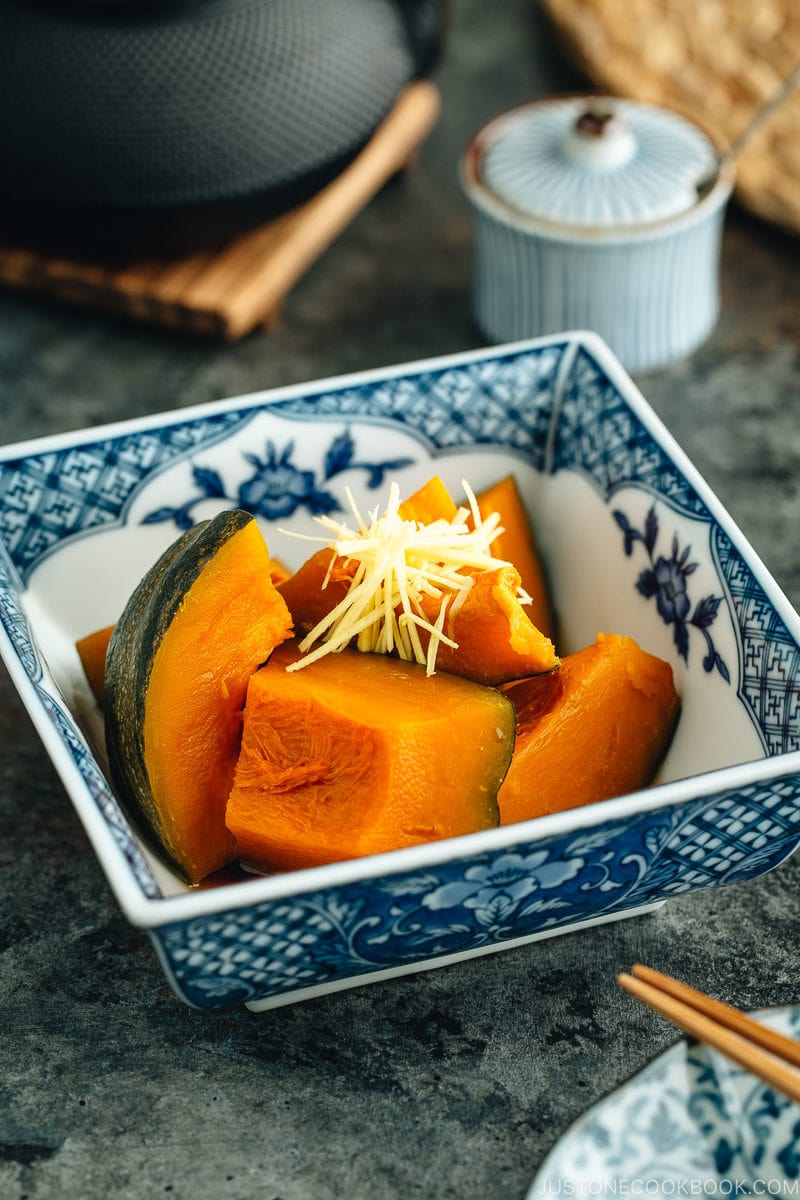
Ichiju Sansai is just a format, so don’t worry if your meal doesn’t look perfect with the correct number of dishes. The key is to have a well-balanced meal of protein, vegetables, and carbohydrates.
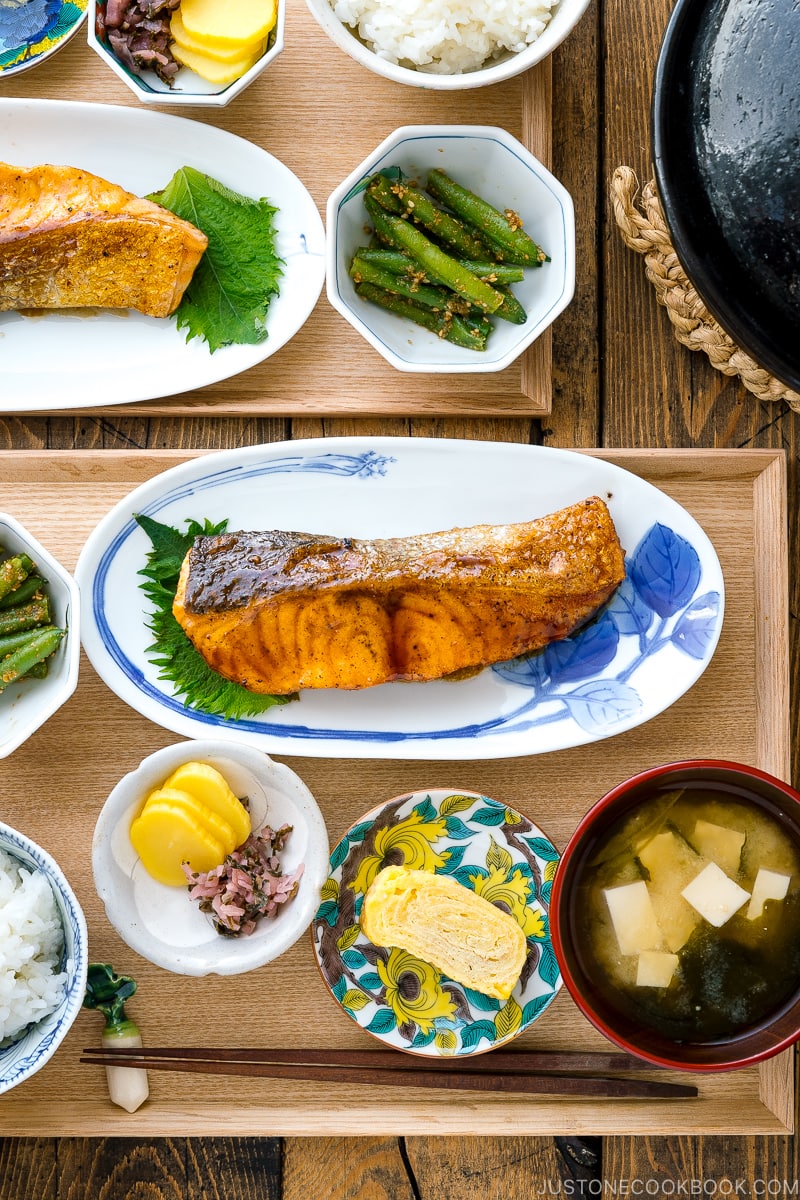
Enjoying Ichiju Sansai
There is something truly special about an Ichiju Sansai meal—take a moment to appreciate the beauty, care, and precision that go into planning and creating this harmonious dining experience.
Remember to say “Itadakimasu” (いただきます) before enjoying your meal and “Gochisosama deshita” (ごちそうさまでした) to express gratitude when you’ve finished!
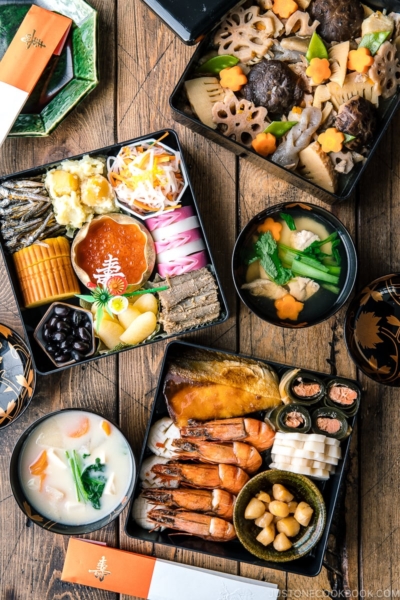
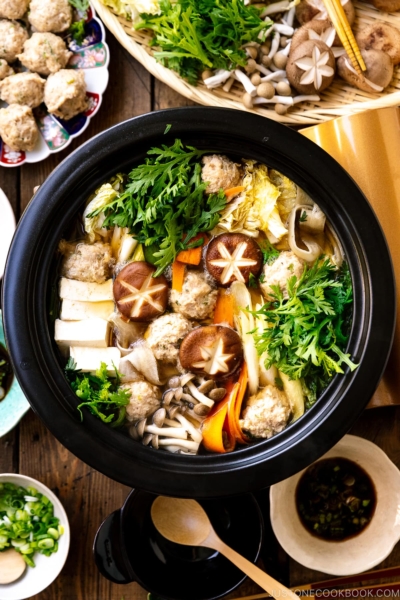
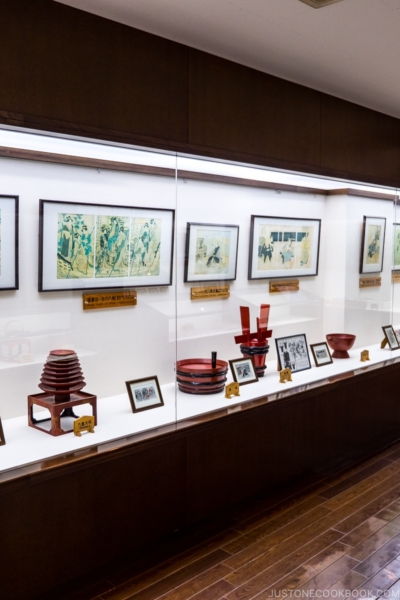
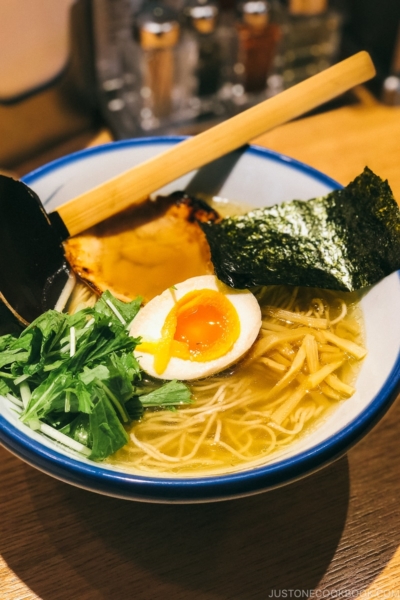
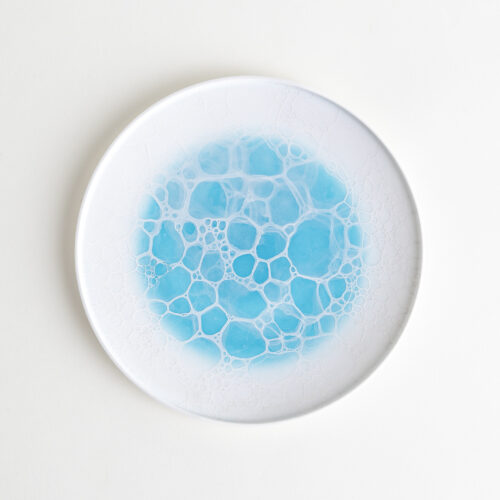
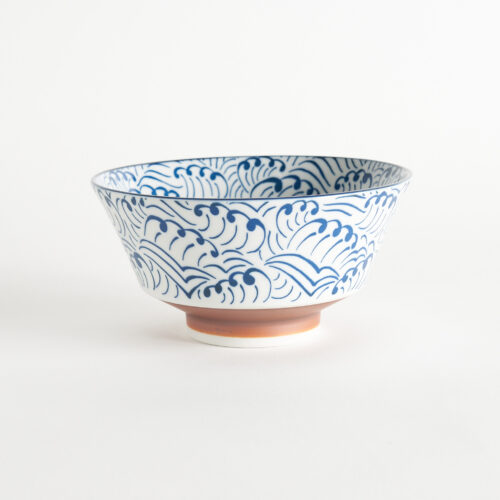
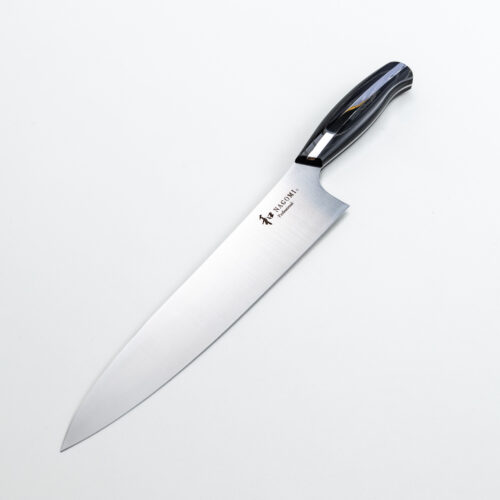
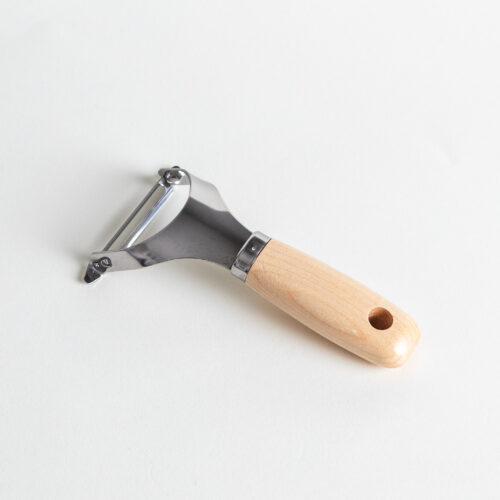

Dear Nami, Dear JOC, Dear entire Team,
this is THE BEST food website par none. Each edition, I’m speechless. Every day I wake up looking immediately if there is a new email from you.
This year I was for the first time in Japan and now I’m helplessly in love with Japan. My heart and soul are longing for Japan. I’m a Zen Buddhist Monk and spent 3 months in a Zen monastery, Toshoji, near Okayama and then a little bit of time in Okayama itself. My question: why doesn’t want everybody live in Japan, the only non-barbarian place on planet Earth?!
Anyway, keep up the good work all of you!
In Gassho,
Shūjō
Hello Shūjō! Thank you very much for your kind feedback!
We are happy to hear that you enjoy our website and Nami’s newsletter, and that you had a lovely stay in Toshoji and Okayama.
The country is so beautiful, and we will continue to share our culture and delicious Japanese recipes! Thank you for your encouragement and support!🫶🏻
Very helpful post was always curious about Japanese daily meals having seen one of these daily meals in a manga(reiji miyajimas famous “kanojo….”),now i understand what goes behind the daily meals rather than just knowing sushi and ramen,no wonder y’all are so healthy.
Hi Manas! Thank you for reading 🙂 Japanese cuisine is more than sushi and ramen (they are occasional foods) and we usually eat humble meals based on the Ichiju Sansai structure, more or less.
Would you ever consider writing a “set guide”, like “here’s some examples of a full meal menu for break fast or lunch or dinner with serving/size amounts” or something? It’d be really handy for beginners that want to learn better food structures and portion sizes. The western diet ends up messing with one’s idea of a good/healthy meal size, so it’s way too easy to just plate up way too much food =.=;
Hi Sandra! Thanks for reading and your feedback. Unfortunately, we are not dieticians, so we cannot calculate serving/size amount appropriate for adults. However, I can give you two hints that can guide you in creating a Japanese meal: one is to use Japanese plates and bowls instead of a one-plate meal (please check out Nami’s favorite online store “Musubi Kiln” for all things Japanese cookware and tableware related. You can also find tableware at Daiso (Japanese dollar store)).
While there is no guide on how much food you should plate, the Japanese dislike piling up too much food, hence you can try serving small portions to begin with. Good luck!
My go to fancy Japanese meal is : sunomono, followed by cold steamed eggplant with a sauce, medium tofu with hot Chile green onion sauce, green bean or spinach gomame and then chawanmushi and finally yakitori chicken and rice !
Hi Barbara! That sounds like a fantastic fancy Japanese meal 🙂
For me this has been such a helpful post. It gave me a way to structure japanese meals, which can seem a little confusing. I would love it if there was a “round-up” of aemono recipes on the website…. when I search “aemono” not much comes up, though there are many “nimono” results. I understand it’s not necessary to be so rigid, but it’s fun for me to use nimono and aemono to choose my side dishes, since there are sooooo many recipes to pick from. 🙂 thank you for this great article!
Hi Rachel, thank you for reading! I have let Nami know to post more aemono recipes!
Thank you! And I’m sure there have been lots of them published…. maybe they are just not labeled that way so they don’t appear in search! Y’all are awesome btw
💕💕💕
Why was Midnight Diner called a porn show?” Thanks to Japanese food porn shows such as Midnight Diner: Tokyo Stories (Shinya Shokudo 深夜食堂) and The Solitary Gourmet (Kodoku no Gourmet 孤独のグルメ)”
Hi Frank. You missed the “food” part of “food porn” meaning aesthetically pleasing food presentation.
I’m wondering, is it particularly important that one side dish is nimono and one aemono? Or is it also common to serve for example two aemono dishes, or steamed vegetables + aemono dish, or just whatever two side dishes a person may like in the meal?
I also came across the term ichiju issai – is ‘one soup, one dish’ also common in home cooking?
Hi Sara! No, you don’t need to strictly follow the guidelines regarding the side dishes, just go with whatever you like! Even a side of salad works too, really it’s more about serving lots of different flavors so the meal doesn’t get boring 😀
Ichiju issai is a term that’s been around since the Kamakura era (1185-1333) adapted by Zen Buddhist monks as a way to serve a more modest and simple meal. The term has been popularized by home cooks in recent years thanks to the cookbook author and writer Doi Yoshiharu (土井善春) as a way to reduce the task of cooking but also to combat overconsumption.